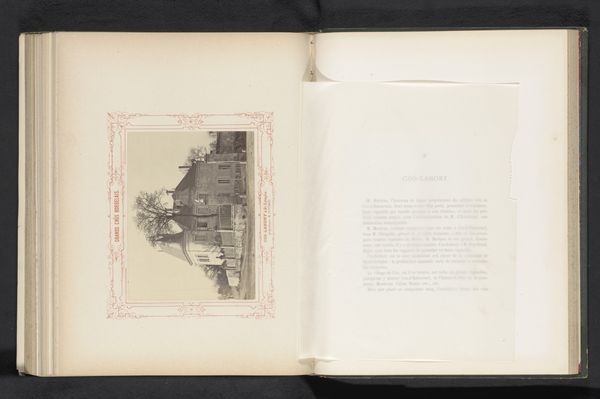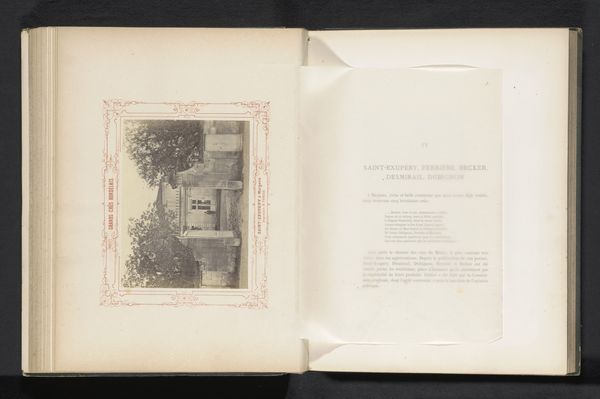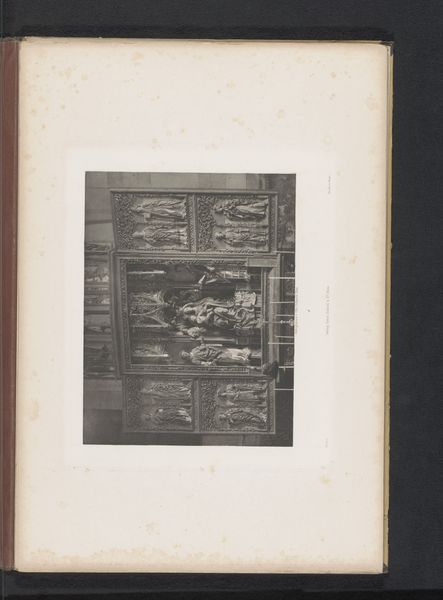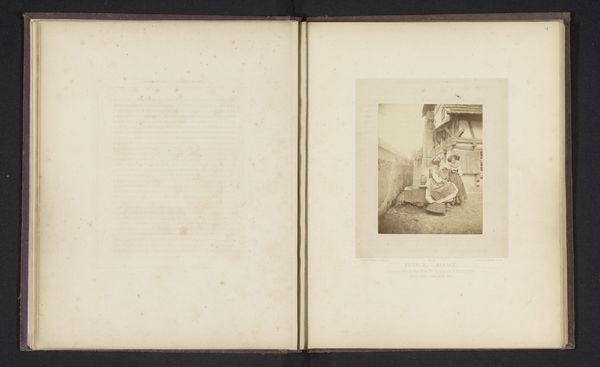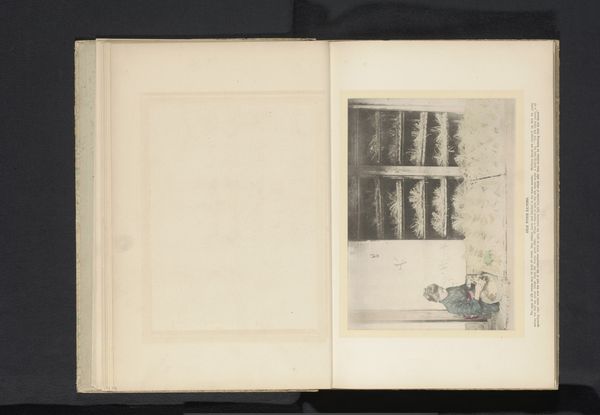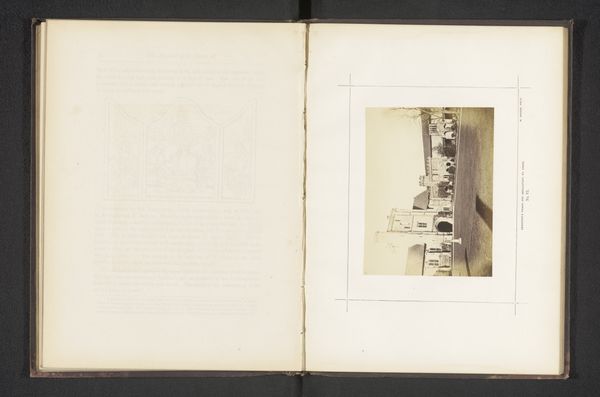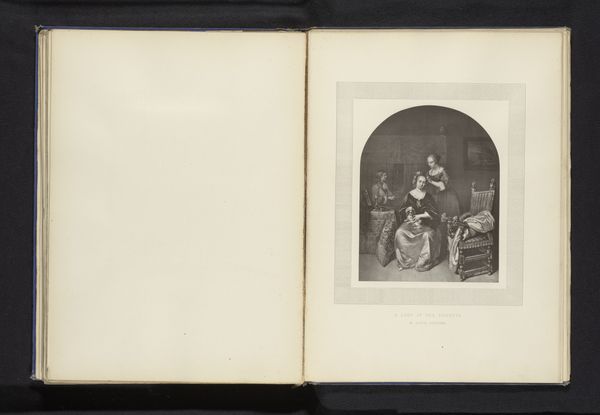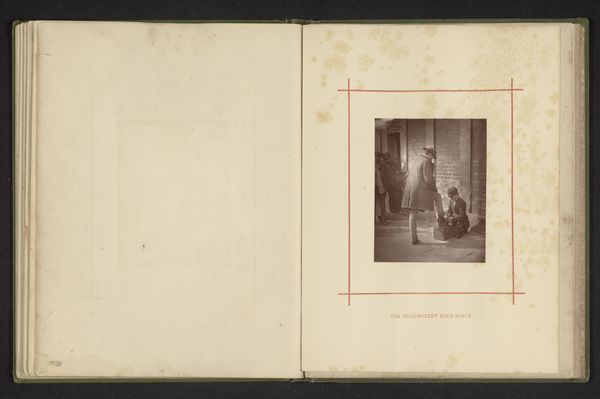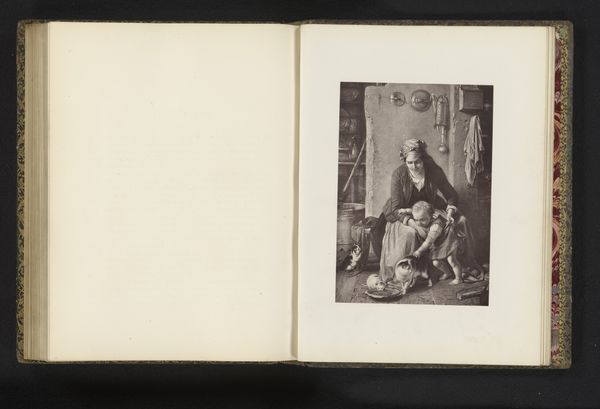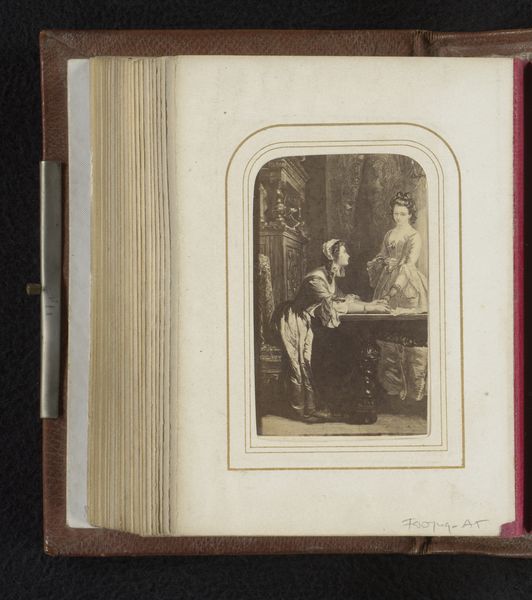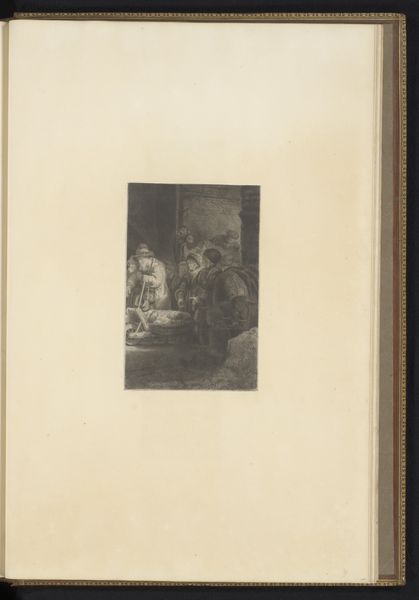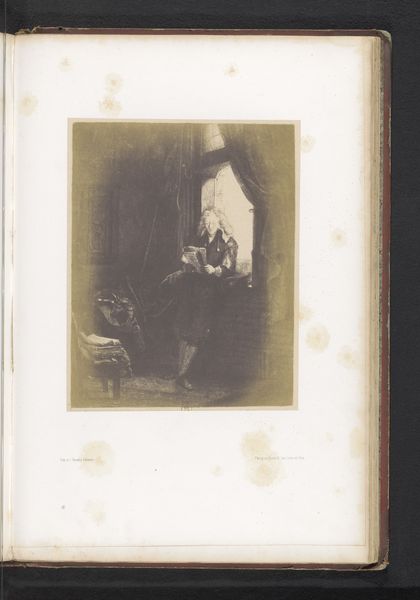
print, photography
#
portrait
#
aged paper
#
homemade paper
#
paper non-digital material
#
paperlike
# print
#
dog
#
sketch book
#
paper texture
#
photography
#
personal sketchbook
#
folded paper
#
genre-painting
#
letter paper
#
paper medium
#
realism
Dimensions: height 150 mm, width 114 mm
Copyright: Rijks Museum: Open Domain
Editor: Here we have a photograph, "Onbekende man met honden bij de keizerlijke kennel," or, "Unknown man with dogs by the imperial kennel" from before 1861, by Furne Fils and H. Tournier. The print, set within a book, presents a kind of posed realism, but I am wondering: what narratives were such pictures trying to construct, and for whom? Curator: That's a very astute question. Let's think about photography’s role in 19th-century social structures. How might this image be participating in shaping public perceptions of the monarchy and their relationship to animals, particularly dogs? Was this image meant to present the aristocracy in an endearing light, as responsible caretakers rather than figures of authority? Editor: It almost feels like propaganda, softening the image of power through something seemingly relatable, like pets. Were images like this commonly disseminated, beyond private collections? Curator: Exactly. Photography at this time was gaining traction in popular culture. Reproductions in books and journals made images like these widely accessible. So, this work, viewed through that lens, asks us to consider how powerful entities managed their public image through emerging technologies. Also, it's not a painting or print; this photograph provided an indexical authenticity that prior forms lacked. Does that shape its persuasiveness? Editor: I suppose that it would give it even more sway. It makes me reconsider the assumed objectivity of early photography and how it can be used to promote agendas. I’ll certainly consider that perspective moving forward. Curator: And it shows how even seemingly simple images can carry significant weight within their specific historical contexts. Thanks to the print format, photography entered new spaces of daily life. It served not just to document the world but also to actively shape social perceptions and attitudes.
Comments
No comments
Be the first to comment and join the conversation on the ultimate creative platform.
